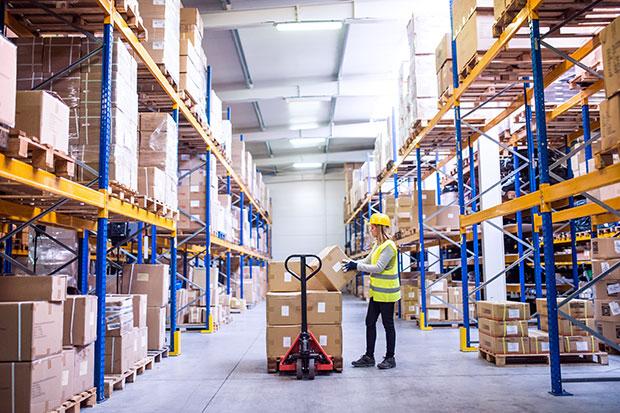A 2019 report by McKinsey & Company estimated that worldwide warehousing operations cost companies about €300 billion each year. This is likely to continue to rise with the growth of e-commerce, and that amount doesn’t include the additional costs warehouses spend on correcting mistakes.
 Automation is already transforming many aspects of daily life, and warehouse automation can do the same for 3PL’s, fulfillment houses and online retailers, by saving time and money through the power of software and IT.
Automation is already transforming many aspects of daily life, and warehouse automation can do the same for 3PL’s, fulfillment houses and online retailers, by saving time and money through the power of software and IT.
Mintsoft’s warehousing and ecommerce expert, Rob Hodgson said: “There are many levels of automation – for people starting out in business, automation could be ‘throwing the spreadsheets into the virtual bin’ and moving to a system that allows them to control inventory and manage orders; all the way to warehouses implementing autonomous mobile robots (AMRs).”
5 Benefits of Warehouse Automation
1. Reduced errors
The primary benefit of automating warehouse tasks is a reduction in errors as there will be fewer tasks being performed manually. By breaking down your warehouse processes into smaller actions and automating parts or all of them, you can reduce errors in areas such as:
•Inventory levels
•Customer emails and invoices
•Pick lists
•Carrier selection
•Shipping
By removing the human touch points within your processes and therefore reducing errors, you will see additional benefits such as higher customer satisfaction and fewer customer returns or redeliveries.
2. Improved efficiency
All businesses want their employees to work as efficiently as possible, and automating warehouse tasks can help with that. For example, implementing a barcode scanning system that connects to your warehouse management system, automating pick lists based on order urgency; and sending directly from your system to your employees handheld device, on which, they’ll see stock location information to speed up the picking process.
The next level of automation could involve introducing autonomous mobile robots (AMRs) into your warehouse to further improve efficiency. The AMRs can be programmed to collect items from a stock location and deliver them to an employee in the packing area.
3. Increased warehouse productivity
A by-product of removing errors and improving efficiency, is that your overall warehouse productivity will increase.
Your processes will speed up due to reduced human touch points and with workflow changes being sent to your pickers through the system based on urgency, there are no longer any delays due to amendments and needing to communicate that to your staff.
4. Reduced costs
An efficient warehouse can reduce costs across your business, these costs include:
•Staff overheads – less unexpected overtime and fewer team members needed
•Refunds – picking accuracy will result in fewer returns
•Inventory loss – accurate inventory tracking reduces the potential to over-order
5. Scalability
Warehouse automation can help you rapidly scale your warehouse operations when necessary, for example, during peak seasons such as Black Friday and Christmas. With efficient processes, you can stock up on inventory and map your warehouse locations for speedy picking of popular items, add seasonal staff with simple training and book couriers for higher levels of shipments with minimal human involvement.
Having a scalable warehouse space also future-proofs your business for growth, new clients and increased demand.
Automate your warehouse with Mintsoft
It’s easy to introduce automation into your warehouse operations with an intelligent warehouse management system (WMS).
Mintsoft customer RIF Logistics has drastically improved operations by fully automating their process throughout, from order input to raising carrier jobs and in turn, have reduced any errors that were occurring from manual data entry.
To find out more about Mintsoft, please visit mintsoft.com





Comments are closed.